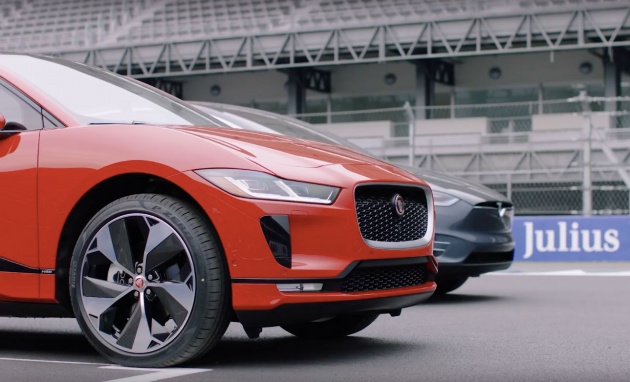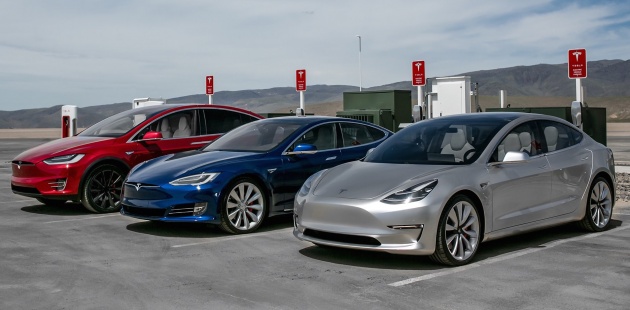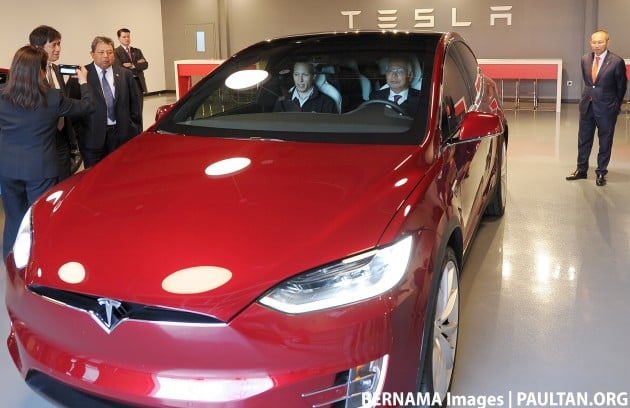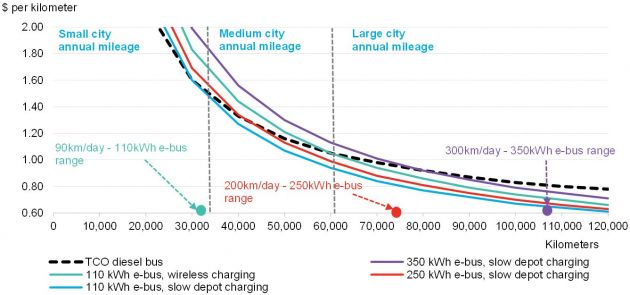The global automotive market is set for a considerable growth of the electric vehicle (EV) population, according to a Bloomberg New Energy Finance report. It forecasts the growth of EV sales from 1.1 million units in 2017 to 11 million in 2025, and onwards to 30 million in 2030 – a growth which is attributed to EVs becoming cheaper to manufacture than internal combustion engine (ICE)-powered cars.
It is said that the average battery pack prices have dropped by 79% from 2010 to 2017, and that the average energy density of EV batteries has been improving at around five to seven percent every year.
The transition to fully-electric vehicles will be led by China, as sales in the country is expected to account for nearly 50% of the global EV population in 2025, and to 39% in 2030 (as EV adoption in other markets rise), the report said. Percentage of adoption in China is forecasted to be 19% of all passenger car sales in China in 2025, followed by Europe at 14% and the United States at 11%.
Sales volume of ICE vehicles is expected to begin declining in the mid-2020s as EVs take a larger stake in the global vehicle market, while shared mobility vehicles will continue to grow in population.
Though the outlook for global EV growth appears optimistic, a couple of hurdles are predicted – there is a risk of cobalt shortage in the 2020s, which will slow the decline of battery costs and consequently the production of battery-electric vehicles, and charging infrastructure may struggle to grow at the same rate as electric vehicle sales.
Highlights from Bloomberg‘s forecast are as follows: 55% of all new-car sales and 33% of the global fleet will be electric, while China will continue to be the largest EV market in the world through 2040. Upfront costs of EVs will become competitive on an unsubsidised basis from 2024, while most vehicle segments will reach parity as battery prices continue to drop.
Meanwhile, buses are expected to adopt full electrification more quickly than light-duty vehicles, and electric buses and cars are expected to displace a combined 7.3 million barrels of transportation fuel a day in 2040.
China remains a leading influence in the EV market not just in volume, but also in industrial transition towards adoption of EVs. Several Chinese cities are on track to fully electrify their bus fleets by 2020, with a few of them set to do so before that date. The report notes that the country’s electrification push is as much about industrial policy as it is about environmental or energy security concerns.
In line with building a national e-mobility ecosystem that will become a major strategic industry in the coming decades, regional and municipal policies in China are also pushing the EV agenda. Though national subsidies are set to end in 2020, a new policy starting next year will see automakers forced into deeper EV adoption via the New Energy Vehicle credit system, alike one in California, US.
This policy acts essentially as an EV quota, where automakers are required to generate credits through the sales of EVs. Those who do not sell enough EVs and consequently fall short of the quota will then be required to purchase credits from their competitors.
Bloomberg considers this to be the single most important EV policy globally, and the publication expects China to increase the quota in order to reach its 2025 target for EVs to reach a 20% representation of all vehicle sales in the country. City-level policies are also expected to impose further restrictions upon ICE vehicle purchase and usage over the coming years.
The steep growth forecast will mean a great ramping up of scale in the lithium-ion battery supply chain, the report continues. Manufacturing capacity for lithium-ion batteries is estimated at 131 GWh this year, and is expected to jump to beyond 400 GWh by 2021 with 73% of global production capacity to be concentrated in China.
This steep increase still has a mountain of a task to surmount, as demand for global EV lithium-ion batteries is expected to exceed 1,500 GWh by 2030. This will drive demand and prices for key battery-making materials such as cobalt, lithium and nickel, the first of which has been tipped to sustain shortage as mentioned above.
Automakers are adopting various plans of attack. While some opting to manufacture all parts in-house, from active materials to finished battery packs, others prefer to purchase active materials and then assemble the pack in-house.
NMC (nickel-manganese cobalt) batteries contain 70% less cobalt than some current batteries, said Bloomberg, and will likely be adopted quickly due to rising prices of cobalt and lithium. The move will help reduce the cost of battery packs, but for prices to fall significantly below US$100(RM398)/kWh, a step-change in technology is required, the report notes.
While the supply of cobalt remains a challenge, lithium supply will not be an issue in the short-term, Bloomberg says – high lithium prices have led to significant increases in investment for new capacity, and supply is deemed sufficient to meet demand for the next five to seven years. Further investment will be required in the 2020s, the report said.
Electric buses are predicted to be among the quickest growers in the commercial fleet transport sector, and again China is the biggest player here. Bloomberg says there are well over 300,000 e-buses on the road globally, with the majority of them operating in China.
Many cities in Western countries are also making commitments to the electrification of their municipal bus fleets over the next decade. In terms of total cost of ownership, e-buses have demonstrated to be less costly than conventional buses, with reference prices for this comparison being $0.66 per lire of diesel and $0.10 per kWh of electricity.
Bloomberg states an example of an e-bus with a 110 kWh battery, which it says reaches parity with a diesel bus at around 60,00 km traveled in a year. This means that even with the smallest battery and the most expensive charging option, the e-bus will be cheaper to run than a diesel-powered bus in a medium-sized city, where buses travel an average of 170 km a day.
Looking to sell your car? Sell it with Carro.






